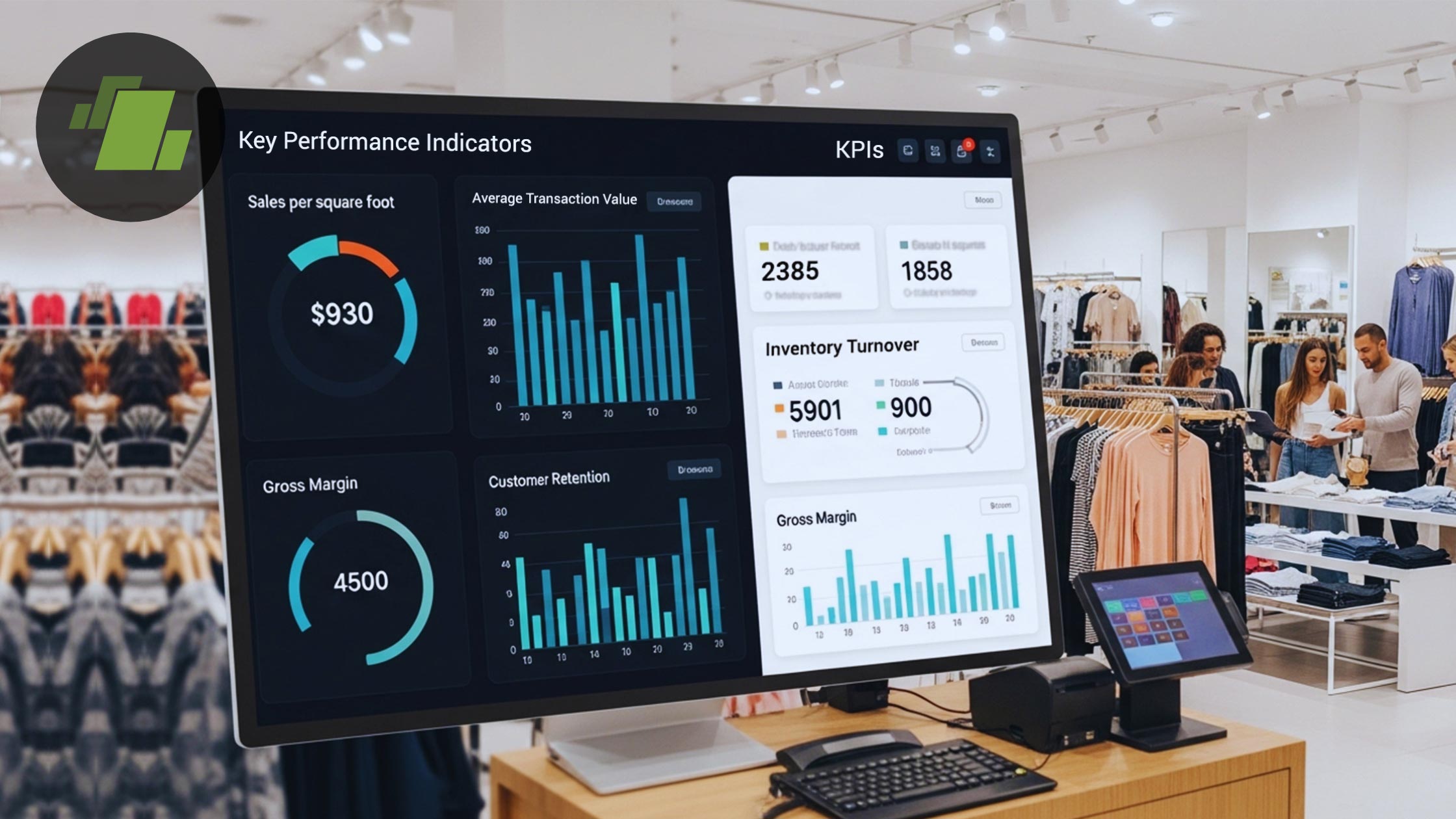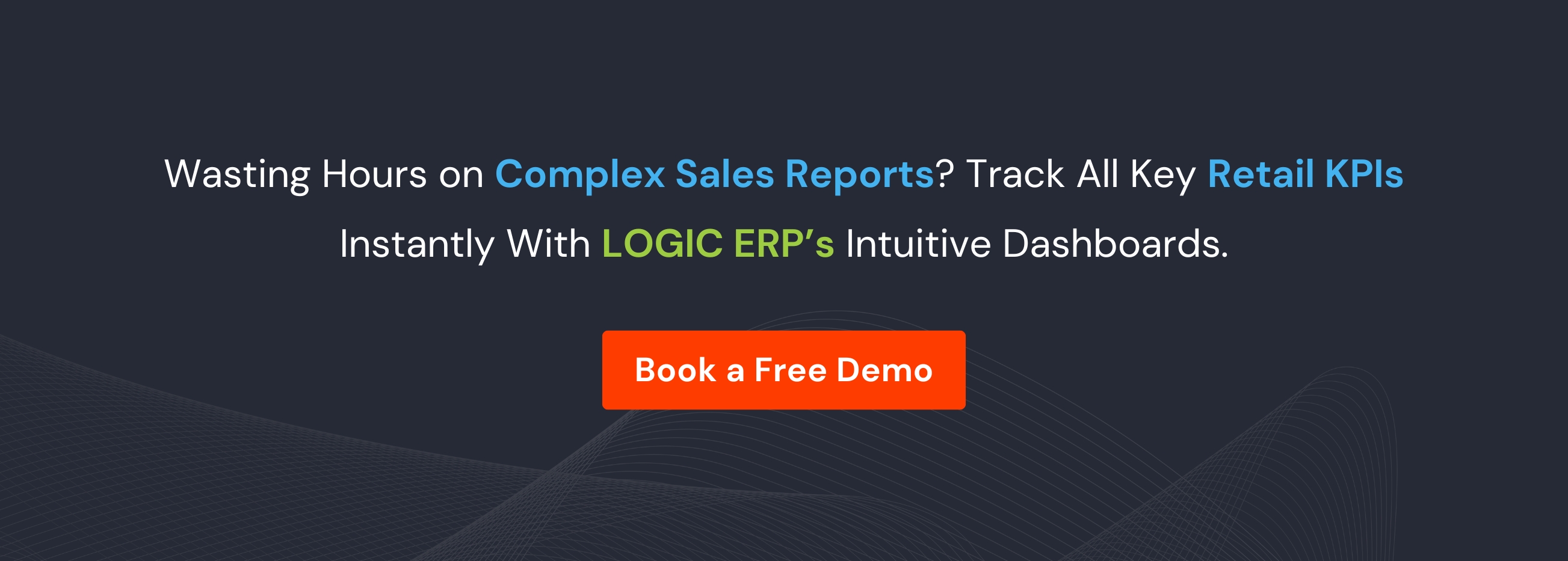Apparel Retail KPIs: A Complete Guide to Measuring Success in Fashion Retail


Summary
In the competitive world of fashion and apparel retail, tracking the right Key Performance Indicators (KPIs) is essential for improving profitability, optimizing inventory, and enhancing customer experience. This guide explores the most important apparel retail KPIs including sell-through rate, inventory turnover, gross margin return on investment (GMROI), sales per square foot, customer retention rate, and more. Learn how these metrics help fashion retailers make data-driven decisions, improve operational efficiency, and stay ahead in the evolving landscape of omnichannel retail. Whether you run a brick-and-mortar store, an eCommerce platform, or a hybrid retail model, understanding and applying these KPIs can directly impact your business growth and bottom line.
Key Takeaways
-
Apparel retail KPIs are essential for tracking performance and driving fashion business success.
-
Sell-through rate helps optimize inventory levels and reduce unsold stock in fashion retail.
-
Inventory turnover ratio highlights how efficiently apparel inventory is managed and replenished.
-
GMROI (Gross Margin Return on Investment) measures profitability per unit of inventory investment.
-
Sales per square foot is a key retail metric to evaluate physical store performance and space utilization.
-
Customer retention rate and conversion rate are crucial for improving fashion retail loyalty and engagement.
-
Omnichannel retail KPIs provide insight into both online and offline sales performance and strategy.
Introduction
In apparel retail, there’s no such thing as standing still.
One season you’re selling out of crop jackets; the next, you’re discounting a full rack of unsold inventory. Customer tastes evolve, trends shift overnight, and what worked last quarter may fall flat today. For fashion retailers, this constant motion is both the challenge and the opportunity.
In such a dynamic space, gut instinct and experience are valuable, but they’re no longer enough. To truly stay ahead, today’s apparel retailers need something more reliable: data that tells the real story i.e. Key Performance Indicators (KPIs).
KPIs don’t just measure numbers, they reveal how your business breathes. From identifying your best-selling categories to spotting costly inventory gaps, the right KPIs give you a clear view of what’s working, what’s not, and where you should focus next.
This guide explores the most impactful KPIs across five important areas of apparel retail: sales performance, inventory management, customer engagement, omnichannel and E-commerce performance, and financial health. It also provides context on how to apply them and common pitfalls to avoid.
What Are Retail KPIs and Why Do They Matter in Apparel?
Retail KPIs are measurable metrics used to evaluate the performance and success of a retail business. In apparel retail specifically, they help decision-makers:
-
Track store and product performance in real time
-
Optimize inventory, pricing, and promotions
-
Identify underperforming areas or products
-
Evaluate customer satisfaction and loyalty
-
Align daily operations with strategic objectives
-
Justify business decisions with data rather than instinct
1. Sales & Store Performance KPIs
These KPIs measure how well your apparel products are selling, how efficient your stores are, and how customers interact with your offerings.
Sales Per Square Foot
Formula: Total Sales ÷ Total Selling Area (sq. ft)
What It Is: Revenue generated per square foot of selling space.
Why It Matters: Useful for physical retail planning, store optimization, and benchmarking store performance across locations.
Example: If a 2,000 sq. ft. store generates ₹20,00,000/month, the sales per sq. ft. is ₹1,000. A similar-sized store generating less may need layout redesign or better staff training.
Average Transaction Value (ATV)
Formula: Total Revenue ÷ Number of Transactions
Use Case: Indicates the average amount spent per customer. A rising ATV suggests successful upselling or bundling strategies.
Units Per Transaction (UPT)
Formula: Total Units Sold ÷ Number of Transactions
Why It Matters: Measures product mix in each transaction. Higher UPT means higher basket size.
Conversion Rate
Formula: (Purchases ÷ Total Visitors) × 100
Insight: If foot traffic is high but sales are low, your store may have layout, staff, or pricing issues.
Digital Tip: For E-commerce, A/B test landing pages and improve UX to boost conversion rates.
2. Inventory & Merchandising KPIs
Inventory control is important in apparel retail, where trends shift fast and holding excess stock leads to markdowns or obsolescence.
Sell-Through Rate
Formula: (Units Sold ÷ Units Received) × 100
Benchmark: A 70–80% sell-through rate in a fashion season is considered healthy.
Why It Matters: Helps understand product demand and timing for reorders or markdowns.
Inventory Turnover Ratio
Formula: Cost of Goods Sold (COGS) ÷ Average Inventory
Ideal Range (Apparel): 3–6 times annually, though fast fashion retailers may aim for higher.
Interpretation: Higher turnover indicates lean, efficient inventory; lower turnover means overstock or slow sales.
Weeks of Supply (WOS)
Formula: Current Inventory ÷ Average Weekly Sales
Use: Forecast how long inventory will last. Useful for demand planning and reducing overstocking.
Stock-to-Sales Ratio
Formula: Inventory Value ÷ Sales Value
Insight: High stock-to-sales may mean overbuying or underperforming sales channels.
Dead Stock Percentage
Definition: Unsold inventory after a defined period (e.g., 90 days).
Impact: Dead stock reduces cash flow, consumes warehouse space, and requires heavy discounting.
Solution: Use ERP-based inventory analytics to flag aging stock and automate markdown scheduling.
3. Customer Experience & Loyalty KPIs
In fashion retail, repeat business and word-of-mouth play a huge role. These KPIs reflect customer satisfaction and engagement.
Customer Retention Rate
Formula: [(Customers at End – New Customers) ÷ Customers at Start] × 100
Importance: Retained customers spend more and are less costly to maintain than acquiring new ones.
Net Promoter Score (NPS)
Formula: % Promoters – % Detractors
Range: -100 to +100
Insight: Use NPS surveys at key touchpoints (post-purchase, delivery, support) to gather feedback.
Return Rate
Formula: (Returned Items ÷ Total Sold Items) × 100
Context: High return rates in apparel often stem from incorrect sizing, misleading product images, or poor quality.
Fix: Invest in AI-driven sizing guides, quality checks, and transparent product photos.
Customer Lifetime Value (CLV)
Formula: Average Purchase Value × Purchase Frequency × Customer Lifespan
Use: Evaluate the long-term revenue potential of each customer segment.
4. Omnichannel & E-commerce KPIs
In modern apparel retail, performance across online stores, mobile apps, and marketplaces must be tracked cohesively.
Cart Abandonment Rate
Formula: (Abandoned Carts ÷ Created Carts) × 100
Reason: Often caused by unexpected shipping costs, complex checkout, or lack of trust.
Fix: Send cart recovery emails, offer free shipping, and simplify checkout.
Click-Through Rate (CTR)
Formula: (Ad Clicks ÷ Impressions) × 100
Use: Measures effectiveness of digital marketing. Helps in evaluating campaign creatives, headlines, and targeting.
Customer Acquisition Cost (CAC)
Formula: Marketing & Sales Spend ÷ New Customers Acquired
Balance With: Customer Lifetime Value (CLV) to ensure long-term profitability.
5. Financial Health KPIs
These KPIs measure your apparel brand’s profitability, investment efficiency, and overall financial sustainability.
Gross Margin Return on Investment (GMROI)
Formula: Gross Margin ÷ Average Inventory Cost
Target: Greater than 3.5 is strong in fashion retail
Why It Matters: Reflects how much gross profit is earned per rupee invested in inventory.
Operating Margin
Formula: Operating Income ÷ Net Sales × 100
Use: Evaluates core business profitability, excluding taxes and interest.
Break-even Point
Formula: Fixed Costs ÷ (Selling Price – Variable Cost per Unit)
Purpose: Assesses when a product line or store becomes profitable.
Scenario: Launching a new denim collection? Use this KPI to decide how many units need to sell before earning profit.
Best Practices for Tracking KPIs in Apparel Retail
-
Set SMART KPI Goals- Ensure KPIs are Specific, Measurable, Achievable, Relevant, and Time-bound.
-
Use ERP & BI Tools Software for reporting and visualizing trends.
-
Review Regularly Track weekly for store-level metrics, monthly for financials, and quarterly for strategic KPIs.
-
Benchmark Against Industry Averages- Compare against top apparel brands or regional competitors.
-
Act on Data, Not Just Track It- Use low UPT or high return rates to adjust marketing, merchandising, or inventory decisions.
Conclusion
In the fast-moving world of apparel, success depends on agility, insight, and precision. KPIs serve as a real-time dashboard for apparel retailers, guiding smarter decisions across merchandising, marketing, inventory, and customer experience.
With the right apparel software solutions, consistent tracking, and actionable insights, KPIs transform numbers into narratives, stories that shape strategy, forecast demand, and strengthen customer loyalty.
Let the data drive your next move in apparel retail!
Frequently Asked Questions (FAQ)
-
What are the most important KPIs in apparel retail?
Key KPIs include sell-through rate, inventory turnover, gross margin return on investment (GMROI), sales per square foot, average transaction value (ATV), and customer retention rate. These help measure financial performance, inventory efficiency, and customer engagement. -
How do I calculate sell-through rate in fashion retail?
Sell-through rate = (Units Sold ÷ Units Received) × 100
This KPI helps apparel retailers assess how quickly stock is selling within a specific time frame. -
Why is inventory turnover important in clothing retail?
It shows how many times inventory is sold and replaced. A high inventory turnover ratio indicates efficient stock management and strong sales performance. -
What is GMROI and how is it used in apparel retail?
GMROI (Gross Margin Return on Investment) measures how much profit you’re earning for every unit of inventory investment. It helps evaluate the profitability of your stock. -
What are omnichannel KPIs in fashion retail?
Omnichannel KPIs track performance across online and offline channels. Examples include online vs. in-store sales, return rate, customer acquisition cost (CAC), and conversion rate. -
Which KPIs help improve retail store performance?
Sales per square foot, foot traffic, and conversion rate help evaluate how well your retail space is performing and where optimizations can be made. -
How often should apparel KPIs be reviewed?
It depends on the metric: sales KPIs may be reviewed daily or weekly, while inventory and profitability KPIs are typically reviewed monthly or quarterly. -
What tools help track apparel retail KPIs effectively?
LOGIC ERP POS systems, and retail analytics platforms help track and visualize KPI performance in real-time.




